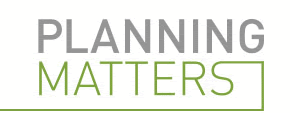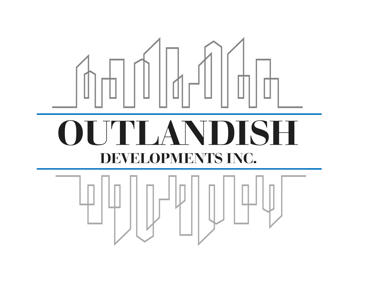Planning Matters
Planning demands the development of a city or the evolution of an existing town so that there is room for it to grow. This growth is not limited to the land size, the height or buildings, or the finds and budgets that a city sets for itself. This growth also accounts for inclusion, change of mindset, diversification, expansion, and involvement of the public to help account for the needs and requirements of that City instead of rubbing off a generalized idea of planning to each City.
Tanisha Singh
5/3/202510 min read


Planning Matters
Planning demands the development of a city or the evolution of an existing town so that there is room for it to grow. This growth is not limited to the land size, the height or buildings, or the finds and budgets that a city sets for itself. This growth also accounts for inclusion, change of mindset, diversification, expansion, and involvement of the public to help account for the needs and requirements of that City instead of rubbing off a generalized idea of planning to each City.
While sound planning seeks data collection, strategic planning, policy drafting, implementation, forecasting goals for growth, and public consultation at its core, there are specific essential characteristics that today’s contemporary planning associates itself with. A few such factors are addressing and implementing social equity, urban economic growth, environmental sensitivity, and overall sustainable development. However, social equity and environmental sensitivity are the most relevant in today’s scenario.
Through the papers, articles, voiced opinions, educational curriculums, and realization, planners today have a direction towards the principle of just social equity and non-discriminatory policies and plans. Authors like Jay Pitter through her open letter, “A Call to Courage,” or Jose Richard Aviles through their perspective on the relationship between planners and cities, or the viewpoint of Janice Barry and Julian Agyeman in understanding and implementing “placemaking” and many other planners, activists, and visionaries have helped planners understand the requirements of a level playing field.
Social Equity- The most relevant characteristic of planning today
Social equity is today’s planning profession’s most critical and core characteristic. Learnings in planning revolve around creating better, sustainable, and viable communities. Today, communities are impacted by the previous fathers of planning and their principles. However, today’s societies are also willing to let go of just the aesthetic side of cities and bend more towards raising the quality of life through the liberation of ideas and thoughts and bringing this freedom and this rich, diverse knowledge to the core of planning the cities we live in. Clean cities, green cities with open spaces that act out as the lungs of the City, affordable housing, excellent infrastructure, a robust transit system, and sustainable practices have been part of the planning processes for decades. And the planners or the visionaries have succeeded in helping bigger cities achieve this in some ways. Looking into the past, planning focusing on these characteristics has helped create sound, livable conditions in many communities and cities; however, in many others, the system has failed to acknowledge the diversity and has systematically excluded the neighborhoods or cities that are not focal points.
The pandemic in 2019, was an eye-opener to our conduct towards established cities that bring in significant economic stability vs. the cities or communities, on a smaller scale, that cannot contribute as much due to lack of opportunities presented to them because of the disparity in planning matters. It was evident through the news channels flashing the mounting number of fatalities every day that the communities with people of color, lower income, lack of infrastructure, lack of economic support, and poor health care were the leaders. In America, the communities with the most significant number of African Americans resided were the communities most gravely hit by the pandemic Post pandemic, the data collected highlighted the impact the “equity-seeking” groups have faced (Pitter,2020).
This is the working class, front-line workers, food delivery workers, janitors, bus drivers, cleaners, and heroes who have served the wealthier, whiter, privileged population through the eye of the storm while facing the worst susceptibility themselves. This example has been the most impactful and relatable example of implication and reinforcing a change in planning matters and ensuring social equity is addressed.
Challenges in bettering the Planning profession
Pitter, in her letters, calls on all of us to not only be vocal about this form of disparity but also urges us to address, acknowledge and implement the issues related to social equity. It becomes our responsibility as future planners to cater to the needs of the changing cities and strengthen the cultural, racial, and intellectual fabric of cities through the inclusion and facilitation of an even platform for everyone. As Aviles puts it, “The goal of planning is the “change” a community” (Aviles,2020). This change in the community can only occur when everyone is equipped with a fair chance to voice their opinion and when these voices are heard. Planners need to understand and process the lived experiences of the natives of any city to understand the root causes of the problems and to allow for sustainable growth. Having learned the profession through mainstream education and leaning onto the policies, theories, and paradigms set by previous master planners may not be the solution to every individual community. It is pivotal for future planners to make this shift and break this bias. Planners need to be flexible and more receptive towards the community members and must listen and take into consideration the voiced problems and go back to the drawing boards to defragment the current policies that may not be working and to be willing to rebuild them to suit the current needs and requirements of any community (Aviles,2020).
The lack of local involvement leads to uneven distribution of funds, resources, and advantages that lead to disproportionate opportunities regarding health, income, education, mobility, and overall quality of life and improvisation. It becomes a social impediment when the planning profession chooses to lay policies for any community disregarding race, gender, religion, history, sexual orientation, disability, or age group. Cities can only be well-planned if and when communities are planned for diversification and inclusion and are displaced due to gentrification. Communities must form a core part of the planning process if we strive to create better communities for all.
Benefits of contemporary planning
The process of planning and the stages of sound and appropriate planning measures is to understand the needs and requirements of a community, assess their current situation, provide them with ideas, options, or ways in which they feel like their issues are addressed, implement these approved ideas, and assess their pros and cons and continue or terminate plans and policies based on their outputs. As Aviles puts it, we can easily translate the concepts or theory of working with clients in a social service setup to those of planning as predesign stage: where consultation with the locals is imperative; the design stage: where plans and policies based on the data collected can be drafted, construction phase: where these drafts become statutory guides and can be implemented and the evaluation phase: where the consequential changes about these new amendments can be analyzed to further refine (Aviles,2020).
While the term “Social Equity” has gained popularity in the planning and development agenda, it has also taken its place in all realms of life. Not one segment, community, or profession is affected by it. As there is no clear delineation of an agenda, it becomes difficult to address its benefits when it comes to one profession on its own. Social equity applies to justice and human rights, social protection, law, healthcare, empowerment, diversification, inclusivity, and many more platforms. In the end, however, all professions or segments are intertwined and have a common denominator: this term refers to providing a level playing field to all. This helps create fair societies that are socially, economically, and politically fair to all its residents. This helps provide better and equal opportunities to anyone and everyone who deserves it based on their skills, qualification, experience, or education and not based on their color, orientation, the community they reside in, the language they speak, or their sexual orientation.
It must be understood that in its most impactful form, social equity does not promote the uplifting of the weaker section or the minority; it benefits the entire community in economic propriety and makes it more successful. Providing the distressed and the weaker segment of the community with similar living commodities, health services, safety, transportation, and access to education, as the wealthier segment or, the more privileged segment of the society only promotes a healthier city with dropped crime, better job opportunities, investment opportunities, lower health-related costs and additional funds in the reserves to promote a richer living experience for that City.
Cities adopting planning policies that are fair, impartial, and just towards all the people in the society have seen and continue to see improvements not just in their socioeconomic outcomes but also seeing a significant shift in overall efficiency and sustainability. When there are minds with different experiences, backgrounds, history, knowledge, heritage, abilities, and ideas put together, it is bound that the majority needs and requirements will be addressed and worked upon. There will be refinement and richness in the services provided, leading to improved serviceability. When consideration is given to solutions provided by marginalized groups, the acceptance rate for such solutions is relatively high, and the resistance is the least. This again helps improve the efficiency of the system. Local, native knowledge and the incorporation of these ideas and experience distill plans and policies and suit the needs and requirements of the local population more than any theory or concept borrowed from any textbook.
Pluralistic Planning
As mentioned in his article, Pluralistic Planning for Multicultural Cities: The Canadian Perspective, M. Qadeer addresses the impact of diversification in the form of multiculturalism as expanding the planning perspectives and making it more open to all. He addresses the needs and requirements different people with varying ethnic backgrounds require in terms of specific services, housing requirements, and local residential arrangements. This helps a city equip itself with alternative housing facilities to cater to diversified needs (Qadeer,1997). Of course, there will always be physical and physiological barriers that hinder the progress of planning, and there are challenges and barriers to facilitating a dialogue when there are new settlers in a city. However, it is the meaningful enjoyment and the constant trying to uphold this enjoyment with the local communities and understanding their needs and requirements through representation that helps transforms a community into a stronger, better harmonized, and much more efficient community.
They are adopting the notion of total equity in development, and social equity in planning, setting the stage for cities to build a healthy social fabric, improving the quality of life for all, and creating lofty goals that align with the prosperity of all of us as a whole.
Fair planning on personal levels
Overall, the gist of the most relatable conclusion of integrating social equity in the planning profession is that this fair platform benefits the community in terms of the wealth of knowledge, vast but integrated local networks, community buy-ins, increased and co-ordinated usability of planned spaces and segments within a city, equitable sharing or distribution of resources, open dialogue with the locals leading to reduces conflicts or backlash and overall financial, economic and social economic stability. On a personal level, these benefits trickle down to each resident in the form of fair and equal career options and job opportunities, access to a robust and readily available health care system, recreational opportunities to expand and explore one’s horizons, fair access to housing and residing in all communities (no segregation), equity in law and rights and the access to a safe community.
Ideal Planning vision
With the idea of a society, community, or City that is equitably developed, providing the same platform for everyone to grow themselves and contribute to the growth of their City and its economic strength, the ideal planned City would match the ideologies of the concept of “Cities for Life.”
The idea behind this “ideal” version of planning is to promote the planning profession to create cities that are aspirational yet pragmatic. These cities would address equitable development, promote social inclusivity, and be comprehensive safeguards for all. Such theoretical cities are proposed considering a strong social urban fabric that endorses habitation that enriches the quality of life for all its residents with its primary goal to help everyone elevate themselves in terms of health, education, economic stability, and social viability.
These cities would engage more in connecting the residents, through ubiquitous technology, with their immediate or overall surroundings to help create a system that can engage with their needs and requirements, register them without bias, and facilitate responses to help meet the needs. This concept of planning also focuses more on the needs, requirements, aspirations, and hopes of marginalized people to ensure an even platform is provided to the population. This planning prospect aims to achieve collective well-being. Adopting this notion would be the ultimate resolution towards commitment to equity and balanced growth and development of society. This may be a steppingstone toward achieving a more ethical and sustainable urban lifestyle. While this concept is a theoretical framework that gives us a peek into the current fundamental problems that the world and the planning profession face today, it allows exploring the future and equips us with ideas and tools to confront and maybe eradicate some of the most virtuous tasks in terms of creating sustainable cities (“Urban Equity in Development — Cities for Life,2013).
The current planning has come a long way from industrial cities, utopian cities, green cities, and more theories. Today’s planning form has taken its ques to form the evolution of previous ideologies. It has evolved into incorporating strategic urban planning, land use planning, urban revitalization, economic planning, environmental sustainability, and infrastructural planning, and now discussing and trying to incorporate equitable planning. The current planning scenario is exceptionally subjective. Some cities and countries are entirely developed and are far ahead in the race with the introduction of innovative city strategies and data collection, and reforms in their political scenarios that address and contribute to their efforts toward sustainable growth. At the same time, many more cities and countries are still fighting to eradicate red-tapism that has blocked their path to evolution in addressing social or economic reforms and reaping benefits from planning matters that address these factors. We can plan and theorize and idealize the perfect scenario, as planners have, over the many years in the past, but instill the current challenges of political polarization, increasing population density, climate change, strains on available resources, introduction and implementation of smart technologies worldwide, land use gridlocks and other economic problems aren’t tackled, the theories about perfect, socially equitable, economically stable and sustainable smart cities will remain conceptual. Governments must come together to come together and deal with these problems at a global level first and discuss the distribution of resources amongst the wealthier countries and the more marginalized countries, just as we would plan for a smaller city when discussing social equity. This sharing and even distribution of resources in terms of natural, intellectual, and financial resources, along with a plan of action and commitment to it, will, sometime in the future, stabilize the grave differences and focus more on better planning practices for all. As we propose planning policies that tackle the immediate problems and address some in theory, we must also be prepared as planners to adjust and accommodate our ideas to suit the unknown factors that the future may hold.
References
https://www.britannica.com/topic/urban-planning
https://ivypanda.com/essays/contemporary-planning-theory-the-shift-to-inclusion/
https://www.planning.org/planning/2020/oct/intersections-viewpoint/
https://www.planning.org/knowledgebase/equity/
https://mirror.unhabitat.org/downloads/docs/12320_1_595236.pdf
https://islandpress.org/books/cities-life
https://mirror.unhabitat.org/downloads/docs/12320_1_595236.pdf




